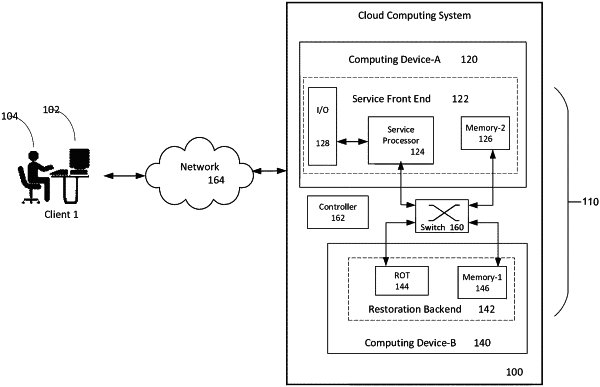| CPC G06F 12/0246 (2013.01) [G06F 9/4403 (2013.01); G06F 12/0638 (2013.01); G06F 12/0646 (2013.01); G06F 21/79 (2013.01); G06F 2221/2143 (2013.01)] | 20 Claims |

|
1. An apparatus to prepare memories for a fleet of servers, comprising:
a switch operable to be controlled by a root of trust processor to enable a first client device of a first user to access a first memory part at a service front end via a server processor of the fleet of servers at the service front end during a first usage period, and to prohibit access of the first client device to a second memory part at a restoration back end via the root of trust processor at the restoration back end during preparation of the second memory part; and
the root of trust processor tasked with memory preparation and deployment,
wherein the root of trust processor is configured to prepare the second memory part by installing in the second memory part, data specific for an environment or task of a second client device of a second user while the second memory part is isolated from the server processor, and
wherein the root of trust processor is further configured to generate one or more signals to transmit the one or more signals, via a connector providing a dedicated path to the switch to trigger the switch to:
remove access of the first client device to the first memory part upon expiration of the first usage period, and
provide access of the second client device to the second memory part via the server processor during a second usage period.
|